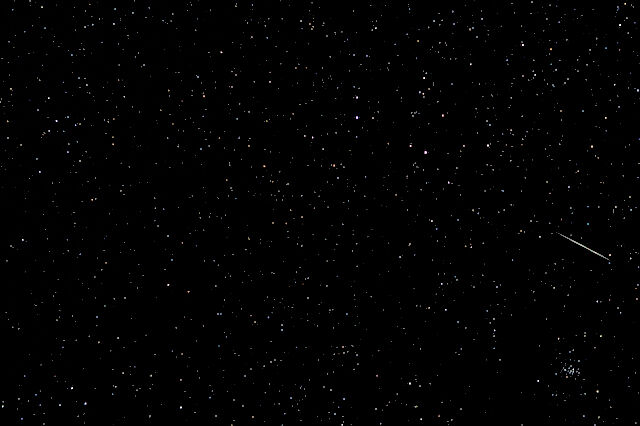
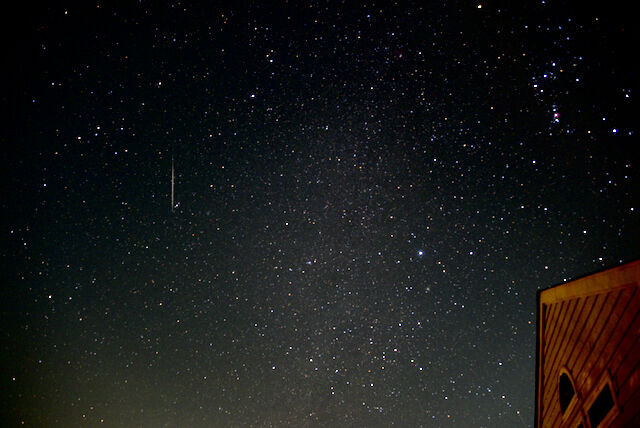
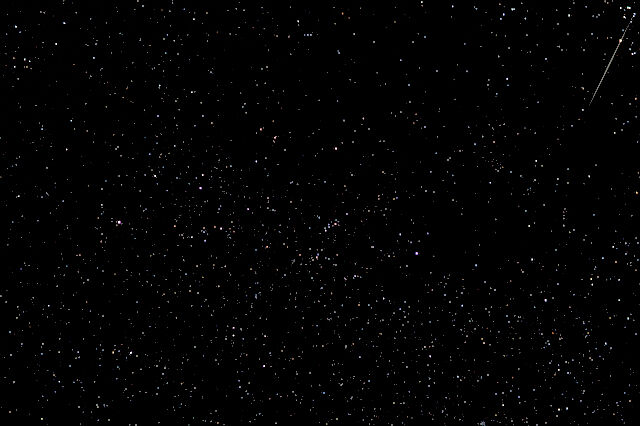
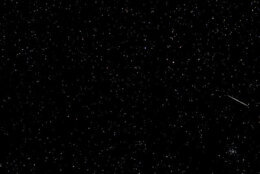
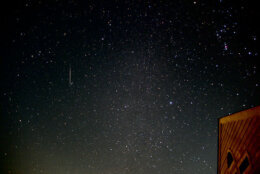
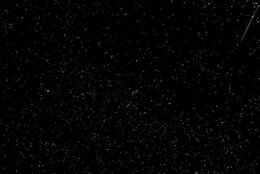
The 2023 Geminid meteor shower was quite the sky show from Central Virginia for anyone who was looking up.
I observed the sky for five hours — 10:30 p.m. to 3:30 a.m. EST — using two cameras and taking 1,249 pictures. My initial review of these pictures has found 12 of them caught the Geminids. From my location, the shower produced meteors that were easily visible and seen over my entire viewing area — about 50% of the sky. I was looking toward the east and could see the entire sky to the south, north and overhead.
The frequency of the Geminids increased after midnight and at times I could see multiple Geminids at the same time. I saw three fairly bright meteors at once in the same section of the sky. The frequency of meteors was steady, with no long lulls between sightings.
The overwhelming majority of the Geminids had short flight paths as they were quick and went from dim to easy to see. The “star” of the show was an absolute beauty that had a long and bright flight path and went right overhead and to my left. It got a “wow” out of me. Unfortunately, it wasn’t in my cameras’ field of view. It was the only Geminids fireball (a meteor brighter than Venus) I saw. My pictures did not capture one either.
I would have liked to have stayed outside longer, but even being bundled up and in a lounge chair-sleeping bag combo, with the temperature being in the mid-20s and falling, I got chilled and called it a night.
Spaceweather.com reported that high hourly rates were observed and the site has a nice “real time gallery” of pictures of the Geminids. Email chatter indicated that anyone who had clear skies and was looking easily saw the Geminids. This chatter echoed my observation of the Geminids being quick and short streaks. A few reports indicated seeing a fireball meteor.
The Geminids meteor shower peaks Thursday at 2 p.m. EST and should have some activity Thursday night as well. As stated by Sky and Telescope, “astronomy popularizer Gianluca Masi will livestream the shower on both Dec. 13 and 14 starting at 23:00 UT [6 p.m. EST].”
On a related note, there’s still time to shop for your stargazer. Maybe seeing something like the Geminids might have sparked a new interest in the sky.
Next year is going to be a busy one for us stargazers and NASA lovers due to the Total Solar Eclipse in April and the Artemis II mission to the Moon late in the year. We’ll enjoy it all together.
I wish everyone a safe, healthy and happy holiday season.
Enjoy the sky show and share on X @SkyGuyinVA, Facebook and check out my daily blog to keep up with the latest news in astronomy and space exploration.







